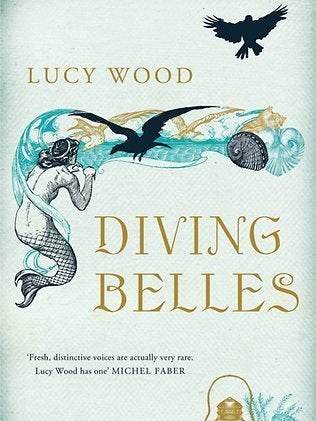
Ask someone what springs to mind when they think of mermaids, and it is doubtful that they will say loss, tragedy or drowning. But as I read nineteenth century collections of Cornish folklore, this is exactly what struck me. Stories of men being lured away by mermaids were common around coastal fishing villages, where the hardships and dangers of a life at sea were well-known to the people who lived there. The image of the beautiful and dangerous mermaid perfectly encapsulates the wildness and unpredictability of the sea - a force which could take away anyone at any time. Suddenly, seemingly fantastical stories became full of very real human concerns and emotions, both tragic and tongue-in-cheek. These narratives arose to explain the loss of men at sea, the suspicions surrounding wise old women, or simply to account for how someone could possibly get lost on the moor at night after a few drinks. Although full of magic, the folklore is firmly embedded in the real stuff of everyday life, and it is this - the human situations and emotions that underpin it - that allows the folklore to be adapted into modern stories.
Folklore is, by its very nature, fluid and adaptable, lending itself to being used in new ways. In Patterns of Folklore Hilda Davidson writes, "folklore draws its life from its powers of adaptation to circumstances, [...] and its ability to reshape itself to fill a new need." Who hasn't embellished a story a little depending on who they were speaking to, or what reaction they wanted to get? These sorts of stories are not static, but rather evolve with, and reflect, changing circumstances and ways of thinking. The folklore that I was reading had been evolving for hundreds of years, and then, half-forgotten and modified by memory, it was collected in the nineteenth century. Now, Cornwall's folklore has become rather stuck, fixed in many people's minds as something for tourists only, a little bit twee and clichéd - more mermaid tea towels than mermaid-haunted waters. By digging back into the folklore, I hoped to find a way of breathing some new life into it.
Straightforward re-tellings would not, I felt, allow me to adapt the folklore in the way I wanted. It would be easy to fall into the trap of re-enforcing clichés and relying on old ideas. Instead, I wanted to write something which was more like a re-imagining. This meant that I could be more playful - picking and choosing ideas and elements from the folklore and working them into my own stories. I wanted to push the ideas within the folklore further, using them as jumping off points, beginnings rather than endings. In "Diving Belles," I tried to draw on the sense of loss inherent in mermaid stories and then go a step further. What about the ones left behind? What would happen if someone were given the chance, after so many years, to see their lost loved one again?
Mermaids, witches and giants are all well-known tropes that I wanted to re-imagine in my stories. Finding ways of approaching them that offered a slightly different perspective was a big challenge. Taking inspiration from the playful aspects of the folklore, I decided to literally 'embody' the anxieties of a teenage boy in the form of a gigantic phantom body, create a nursing home for witches, and a business which reclaims lost husbands with the use of a diving bell. Other ideas came from images: a wrecker hunting through boxes, a magpie leading someone away from home. Or through turning things on their head and wondering what house spirits would think of us.
Throughout the collection, I wanted the folkloric magic to work literally and metaphorically. Like the magical realist tradition that inspired me, the magic in the stories needed to literally exist: there really are mermaids that take away husbands. But, following on from the tradition of the folklore, the magic could also act as a metaphor for the characters' situations. In "Countless Stones" a woman is literally turning into stone, but at the same time, turning into stone becomes a metaphor for the trapped, not-quite-letting-go relationship she has with her ex-partner.
I hoped that the stories would draw strength from this mix of the magical and the everyday, or as Salman Rushdie puts it, the "commingling of the improbable and the mundane." Adapting the folklore into short stories helped me to balance this mix - using glimpses, fragments and inviting the reader to build the bigger picture for themselves. By focusing on small, everyday settings and events, I hoped that the magic, rather than distancing the stories from the real world, would evoke a sense of wonder of the commonplace. In its attentiveness to the details of a specific place, a region's folklore can help you to see it with fresh eyes. Standing on a cliff in Cornwall you begin to notice the flickering shapes of mermaid's tails in the peaking waves, and giant sized chairs and tables in granite rock formations.
When looking round the folkloric sites of Cornwall - the standing stones, stone circles and giant's graves - it is easy to get drawn into descriptions like "ancient" and "mystical." But there is nothing like standing beside an ancient and mystical wishing tree and seeing that the wishes tied to it are made from old shoe laces, plastic bracelets and elastic bands, to bring you back down to earth in a rather lovely way, to make you remember that these stories, although magical, are firmly embedded in everyday life.
Lucy Wood is the author of Diving Belles [Mariner Books, $14.95].